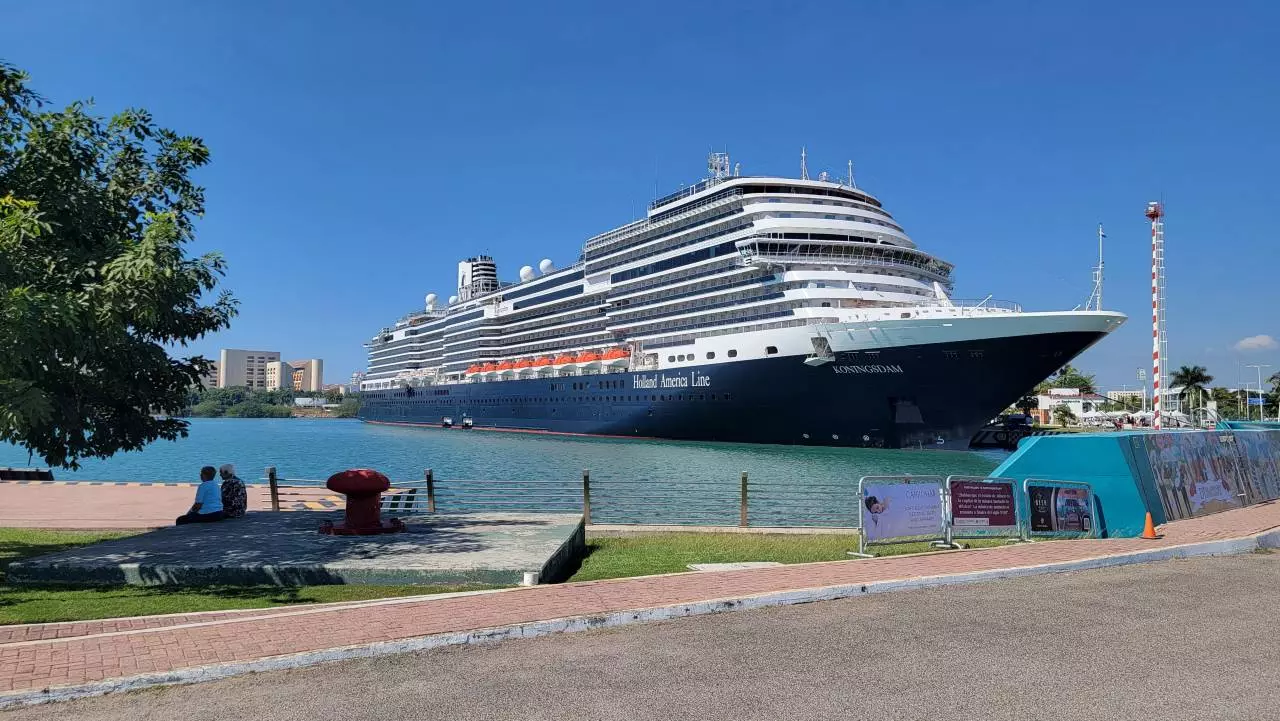Cruise ships are not designed to go fast, that's because they are designed for passenger comfort and fuel conservation. Unlike ocean liners that once sailed regularly between the UK and the United States across the Atlantic, most cruise ships are designed to go relatively slow at a steady pace, with passenger comfort and environmental efficiency as the primary considerations. In fact, even though most modern cruise ships can go faster than 20 knots, they seldom will. On Baja Mexico trips out of California to Ensenada, for instance, you'll often see the cruise ships sailing in circles because they would get to the next port too fast.
Questions
How Many West Coast Cruises Have You Taken?
Key Points
- Modern cruise ships typically operate at 18-20 knots for optimal efficiency, though they can reach maximum speeds of 22-24 knots, significantly slower than historic ocean liners which could achieve speeds over 30 knots.
- Most cruise itineraries are specifically designed with shorter distances between ports, making higher speeds unnecessary and allowing for comfortable overnight travel.
- Environmental efficiency and passenger comfort have replaced speed as the primary considerations in modern cruise ship design.
- Ships often deliberately slow down or sail in patterns to maintain scheduled arrival times, particularly on shorter routes like California to Mexico.
- Even luxury cruise ships prioritize steady, moderate speeds over rapid transit, focusing on the journey rather than the destination.
Article Index
Think about it, the Journey from Catalina to Ensenada is only about 150 miles, this entire journey would only take about 6.5 hours at 20 knots - meaning that if the last tender returned to the ship at 5pm, the ship could conceivably arrive at the dock in Ensenada before midnight! Obviously, they don't want that since cruise lines make more money when sailing in international waters with casinos, bars, and shops open for guests to spend their money on the ship instead of in port. The same principle is even more true over in the Caribbean, where Miami to Bimini is only 50 miles, for instance!
Evolution of Cruise Ship Speed and Propulsion
I think it is important to start this discussion but looking at the evolution of passenger vessel speed over the centuries. This is especially important when we look at the fact that today's cruise ships really aren't that fast and for most guests, that's just fine since the journey is the experience they are paying for, not how fast they can "get to Alaska" for instance.
- Mayflower: The historic Mayflower, propelled by wind-powered sails in the early 17th century, typically sailed at modest speeds of around 2–3 knots—reflecting the technological constraints of its time.
- Titanic: Launched in 1912 and powered by coal-fired steam engines, the Titanic achieved speeds of up to 23 knots, blending the era’s engineering ambition with emerging luxury standards.
- Fastest Ocean Liner (SS United States): Widely recognized as the fastest large passenger ship ever built, the SS United States, launched in 1952, reached speeds of approximately 34.5 knots on its record-breaking maiden voyage. However, other ocean liners maintained similar speeds, including the Queen Mary 2, which travels at around 30 knots today.
- Norwegian Encore: As an example of a modern cruise ship, the Norwegian Encore emphasizes guest comfort and environmental efficiency over raw speed, with a top speed of about 22 knots. However, you will typically find your ship sailing at a more moderate 18 knots to save on costs and improve comfort.
Ultimately, cruise ships could go much faster if they wanted to and large military vessels like the Gerald R. Ford-class carriers can reach speeds greater than 30 knots when they need to. Maritime propulsion technologies have moved from basic sail and steam power to get people from one point to the next to focusing more on a careful balance of speed, fuel economy, and passenger comfort. This evolution explains why ocean liners from decades past - built specifically for fast, long-distance crossings—can achieve higher speeds than today’s cruise ships, which prioritize luxurious, stable, and eco-friendly voyages.
Cruise Ship Top Speed vs. Ocean Liner Top Speed
Novice cruisers might confuse ocean liners and cruise ships, but while they are each designed to carry passengers on vacation, they are designed for different purposes. Ocean Liners such as Cunard Line's Queen Mary 2 (currently the world's fastest ocean liner) are designed for transportation, taking people from one destination to the next as quickly as possible. The modern cruise ship evolved from ocean liners but on an Alaska cruise for instance, the ports are close together so you don't necessarily need to go faster. A difference between 18 knots and 30 knots (35 mph) might only make the difference.
As an example, consider two Alaska cruise ships ports of Juneau and Skagway. They are roughly 86 miles apart. At 30 knots, this is a 2-hour and 52-minute journey, but at 22.5 knots (Norwegian Bliss top speed), the journey is 3 hours 49 minutes. While that's an extra 1 hour of travel time at max speed, the reality is that there's no need to even go that fast between those two ports. In fact, on one Alaska cruise itinerary for 2021, Norwegian Bliss is scheduled to depart Juneau at 11 pm on Monday and arrive in Skagway at 7 am the next morning. That's a scheduled journey of eight hours or an average speed of only 10.7 knots.
On the other hand, an ocean liner such as Queen Mary 2 traveling from Southhampton, England, UK to New York City travels a distance of roughly 3,000 miles with no port calls. That voyage is approximately 100 hours of travel time over seven days at the Queen Mary 2's top speed of 30 knots. While Norwegian Bliss doesn't do point to point transatlantic cruises like this, that same voyage at her top speed of 22.5 knots would add an extra 33 hours of travel time! However, even in this theoretical scenario, you'll notice that you could travel that distance in just over 4 days at top speed, but Cunard schedules her to do the journey over the course of six full days at sea.
Just like with air travel, you'll notice that older ocean liners actually traveled faster. In fact, the SS United States remains the fastest ocean liner ever built and it averaged 34.51 knots on its record-breaking transatlantic maiden voyage in 1951.
As you compare how fast cruise ships go compared to ocean liners, you will also notice other design elements that allow an ocean liner to travel faster through the water. This includes a generally more sharply angled bow and narrower beam. These all help reduce friction and help make the ship sail faster from port to port. Today's cruise ships - while still designed to carry passengers on vacation - are a completely different type of ship.
So, How Fast Does A Cruise Ship Go?
A cruise ship, on the other hand, isn't focused on traveling as fast as possible. The question of, "How fast is a cruise ship?" is a bit more complicated since the speed of a cruise ship is dictated as much by fuel economy as it is by the ability of cruise ship engineers and the captain's desire to go fast. In fact, just like the scenario above with Alaska cruises, with Caribbean cruises, and west coast cruises to Mexico, you'll notice the same pattern. With a few exceptions - such as cruises from San Diego and Los Angles to Hawaii, most cruise ports on your itinerary are close enough to allow the ship to travel overnight. This is why your port departure time might vary sometimes from 4 pm to 7 pm but you almost always arrive sometime around 7-8 am, just in time to start your day exploring the destination.
In my experience, a cruise ship almost never travels at full speed. Instead, you'll notice that 18-20 knots is about the average cruising speed under most conditions. This allows the ship to cut through the waves easily for maximum passenger comfort while still having extra speed available if the captain needs to avoid weather or there's an issue somewhere that delays departure or arrival.
When it comes to designing new cruise ships, speed is absolutely taken into account. For instance, you will notice that on average ships from Carnival Cruise Line are slightly slower than those from Holland America Line. This is because while Carnival's cruise ships are designed to travel slowly between ports that are close together in the Caribbean primarily, Holland America Line cruise ships often travel long distances between ports and so speed is an important factor that could reduce a voyage with three sea days to only two for instance.
Interestingly, though, while you would think that smaller cruise ships could travel faster, this isn't always true. For example, Viking Ocean's current generation of cruise ships such as the Viking Star (47,842 GT) is rated at only 20 knots maximum speed with a 17-knot service speed. Compare that to 79,300 for Queen Mary 2 and 168,028 for Norwegian Bliss. Royal Caribbean's Symphony of the Seas and Odyssey of The Seas have a max speed of 22 knots.
Sailing Slower: Comfort, Safety, and Sustainability
Modern cruise ships prioritize passenger comfort and safety above all else, leading to a deliberate choice to maintain moderate speeds that optimize the overall experience while minimizing environmental impact.
Passenger Comfort Benefits
The gentle motion of a ship traveling at moderate speeds reduces vibration and movement, creating a more stable environment for activities and relaxation. Lower speeds also mean less wind resistance on deck areas, allowing guests to fully enjoy outdoor spaces like pools and promenades.
Environmental Considerations
Reduced speeds result in significantly lower fuel consumption, directly decreasing carbon emissions and environmental impact. Ships operating at moderate speeds of 18-20 knots typically use 30-50% less fuel compared to those pushing maximum speeds above 25 knots.
A slower cruising speed represents the sweet spot between operational efficiency, guest satisfaction, and environmental responsibility.
Small Luxury Cruise Ships Speeds Also Aren't Fast
Even luxury cruise ships prioritize practicality over speed, focusing on optimal cruising efficiency rather than rushing from one port to the next.
For instance, Scenic Eclipse (17,545 GT), one of the most advanced and certainly among the most luxurious small ships, can only travel at 17 knots with a maximum of 19.5. The same holds true for Seabourn Ovation (41,865 GT) who's cruising speed is 15 knots with a maximum speed of 18.6. Both ships are brand new and certainly could travel faster if they needed to but that's not the point.
Cruise ship speeds are determined by practical needs and operating costs rather than technical limitations. Despite being considered relatively slow, cruise ships sailing at 20 knots actually outpace most commercial vessels, with container ships averaging 16 knots and tankers 13 knots. Given growing environmental concerns, even luxury cruise lines are trending toward slower speeds, as evidenced by Cunard Line's newer vessels which operate at lower speeds than their predecessor, the Queen Mary 2.
Cruising Speeds: Finding A Balance at Sea
The evolution of cruise ship speed tells us more than just a story of maritime engineering – it reveals how our priorities in travel have fundamentally shifted. While historic ocean liners raced across the Atlantic at speeds exceeding 30 knots, modern cruise lines have discovered that slower speeds of 18-20 knots not only enhance the guest experience through reduced vibration and better stability but also represent a crucial step toward environmental sustainability. Perhaps most surprisingly, studies have shown that passengers report higher satisfaction rates on cruises maintaining steady, moderate speeds, suggesting that in the world of cruise travel, the old adage rings true: it's not about the destination, but the journey itself.
Thanks for reading. We hope this was helpful!
Why stop now?
Participate In Our Polls | Ask or Answer A Cruise Question | Contact Heather to Book Your Next Cruise!

